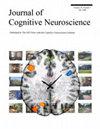Neural Associations between Inhibitory Control and Counterintuitive Reasoning in Science and Maths in Primary School Children
IF 3
3区 医学
Q2 NEUROSCIENCES
引用次数: 0
Abstract
Emerging evidence suggests that inhibitory control (IC) plays a pivotal role in science and maths counterintuitive reasoning by suppressing incorrect intuitive concepts, allowing correct counterintuitive concepts to come to mind. Neuroimaging studies have shown greater activation in the ventrolateral and dorsolateral pFCs when adults and adolescents reason about counterintuitive concepts, which has been interpreted as reflecting IC recruitment. However, the extent to which neural systems underlying IC support science and maths reasoning remains unexplored in children. This developmental stage is of particular importance, as many crucial counterintuitive concepts are learned in formal education in middle childhood. To address this gap, fMRI data were collected while fifty-six 7- to 10-year-olds completed counterintuitive science and math problems, plus IC tasks of interference control (Animal Size Stroop) and response inhibition (go/no-go). Univariate analysis showed large regional overlap in activation between counterintuitive reasoning and interference control, with more limited activation observed in the response inhibition task. Multivariate similarity analysis, which explores fine-scale patterns of activation across voxels, revealed neural activation similarities between (i) science and maths counterintuitive reasoning and interference control tasks in frontal, parietal, and temporal regions, and (ii) maths reasoning and response inhibition tasks in the precuneus/superior parietal lobule. Extending previous research in adults and adolescents, this evidence is consistent with the proposal that IC, specifically interference control, supports children's science and maths counterintuitive reasoning, although further research will be needed to demonstrate the similarities observed do not reflect more general multidemand processes.小学生科学与数学中抑制控制与反直觉推理的神经关联。
新出现的证据表明,抑制控制(IC)在科学和数学反直觉推理中起着关键作用,它抑制了不正确的直觉概念,使正确的反直觉概念出现在脑海中。神经影像学研究表明,当成人和青少年对违反直觉的概念进行推理时,腹外侧和背外侧pfc的激活程度更高,这被解释为反映了IC的招募。然而,在儿童中,IC背后的神经系统在多大程度上支持科学和数学推理仍未得到探索。这一发展阶段尤为重要,因为许多关键的反直觉概念是在儿童中期的正规教育中习得的。为了解决这一差距,研究人员在56名7至10岁的儿童完成反直觉的科学和数学问题时收集了功能磁共振成像数据,同时还完成了干扰控制(动物大小Stroop)和反应抑制(go/no-go)的IC任务。单因素分析显示,反直觉推理和干扰控制的激活存在较大的区域重叠,而反应抑制任务的激活更为有限。多元相似性分析揭示了科学和数学在额叶、顶叶和颞叶区域的反直觉推理和干扰控制任务,以及在楔前叶/顶叶上小叶的数学推理和反应抑制任务之间的神经激活相似性。扩展先前对成人和青少年的研究,这一证据与IC,特别是干扰控制,支持儿童科学和数学反直觉推理的建议是一致的,尽管需要进一步的研究来证明观察到的相似性并不反映更普遍的多需求过程。
本文章由计算机程序翻译,如有差异,请以英文原文为准。
求助全文
约1分钟内获得全文
求助全文
来源期刊
CiteScore
5.30
自引率
3.10%
发文量
151
审稿时长
3-8 weeks
期刊介绍:
Journal of Cognitive Neuroscience investigates brain–behavior interaction and promotes lively interchange among the mind sciences.

 求助内容:
求助内容: 应助结果提醒方式:
应助结果提醒方式:


